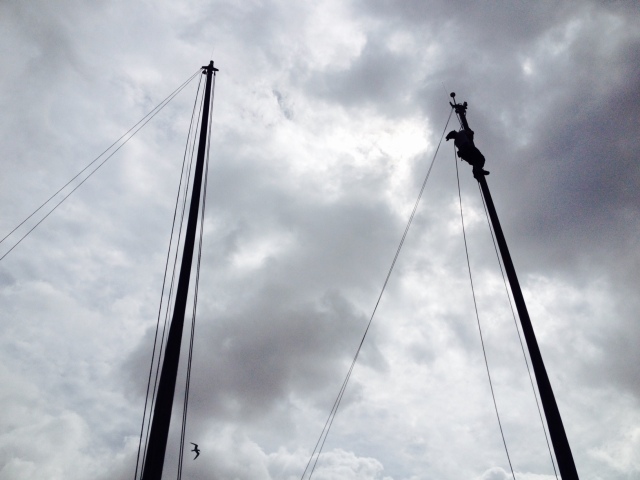
Lessons learned on the sail from Curacao to Aruba helped us better prepare for this passage. Having to send someone up the mast once because of a poorly tied knot is one time to many – fortunately we haven’t had any more problems thus far on our voyage in Colombian waters.
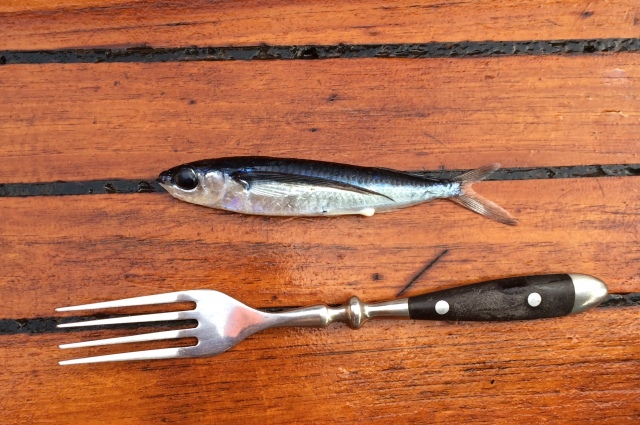
Throughout our time off the Venezuelan coast, these little flying fish constantly made kamikaze leaps into our boat. While we found most dried up on our foredeck, a number managed to make it into the cockpit where we could hear them flopping around and tossed them back to sea. On one occasion a little guy landed in the aft cabin next to Maggy as she rested off watch; shortly afterwards another jumped so high that it actually hit me in my head!
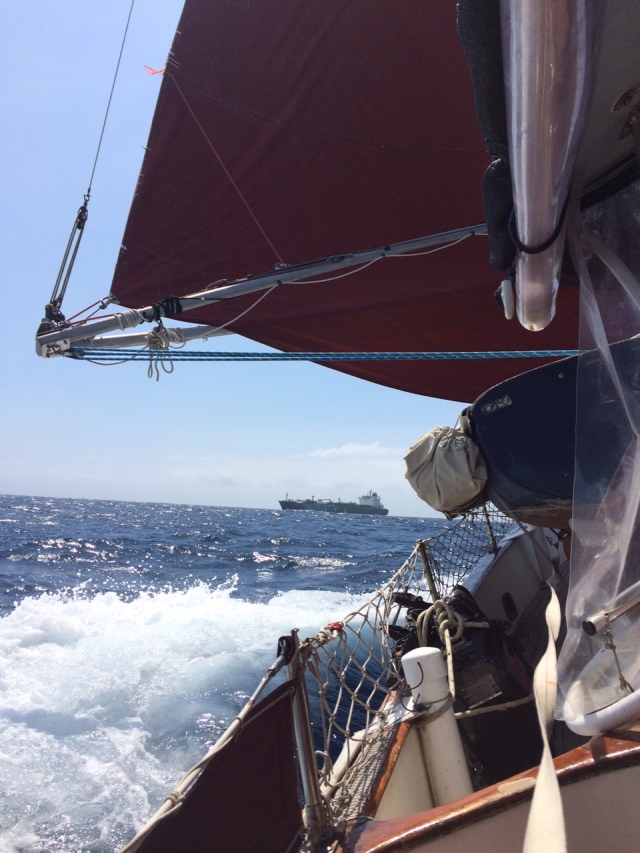
The passage north of Los Monjes had a good bit of commercial traffic. Here the ‘George N’ passed safely ahead of us after we gybed to avoid him. Before our course change, the Closest Point of Approach (CPA) was only .09 miles!
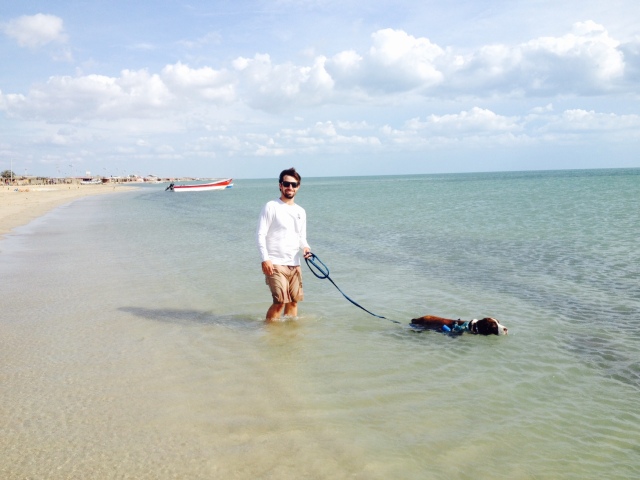
Entering Colombia on the remote La Guajira Peninsula was an interesting experience – aside from the natural beauty of the desert landscape, the lack of government presence left us with a better understanding of the difficulties that come with controlling coastal borders. Our arrival into Cabo de Vela was unmonitored, giving us the opportunity to explore the country without ever passing through Immigration or Customs. We wouldn’t officially ‘clear in’ for another 3 days.
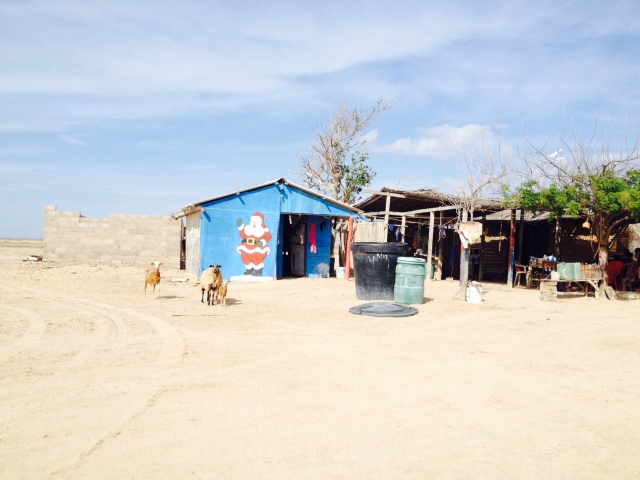
While this picture doesn’t seem like much at first, Maggy could not help but notice how well it summarizes life in this small village. In the far right you can see a bench lined with random soda bottles, all of which are filled with gasoline for sale to passing 4×4’s. The building under construction on the left is something seen throughout the country – people add to their dwellings in a piecemeal fashion building when supplies and money allow it. As for the goats, we aren’t sure what their story is… other than they did not like Opti dog what so ever.
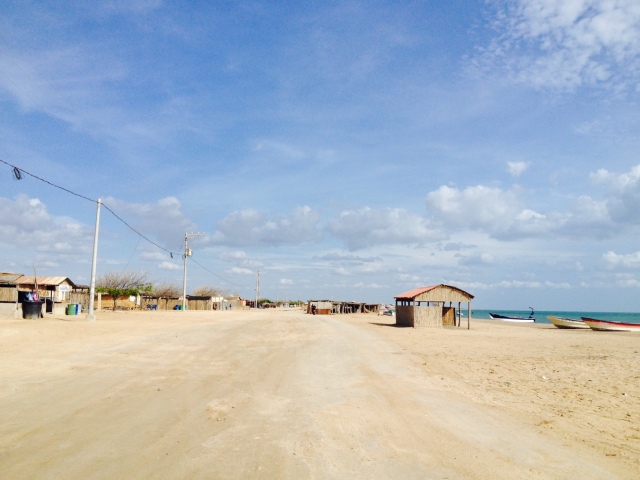
This small fishing village is plagued with strong easterly tradewinds throughout the year. Fortunately, the shallow protected bay is oriented such that the high winds blow over miles of flat land before coming into contact with the sea. This setup allows for ideal kite boarding conditions, suitable to beginners and pros alike. The local teenagers are truly impressive, landing tricks you rarely see back home. Lessons start at $33/ hour and gear rental is $8 less. Not only are these lessons insanely cheap, but the latter often isn’t even possible due to insurance requirements in the states.
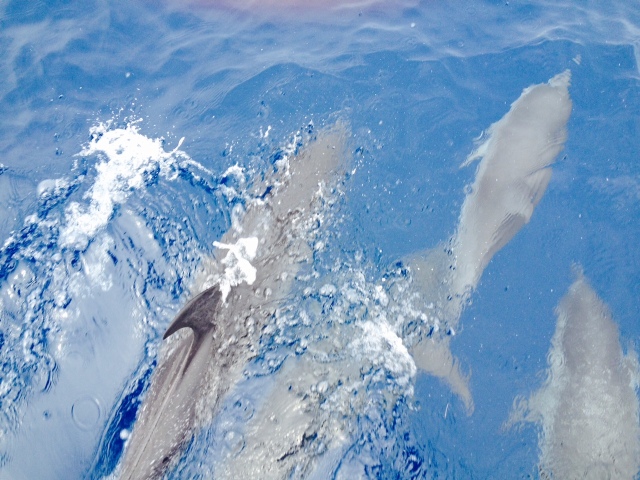
These dolphins swam right under the bow for about thirty minutes during one of Maggy’s morning watches. There were 7 dolphin total, one of which was just a baby.
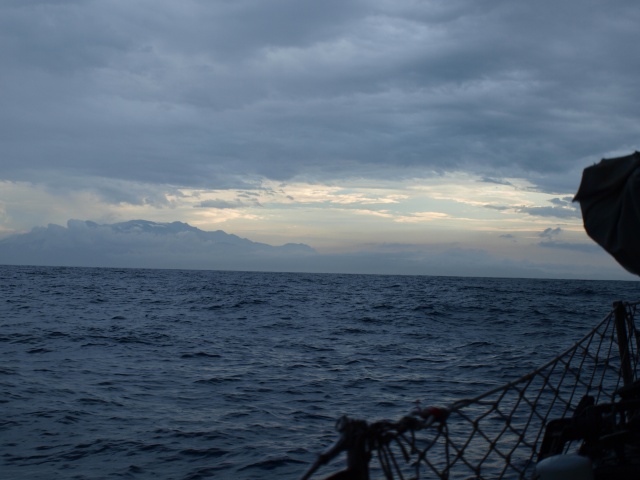
After a strong squall settled down we were able to catch an evening view of the Sierra Nevada de Santa Marta, the world’s highest coastal mountain range extending from sea level to 18,700 feet. This view reminds me so much more of landfalls I have made up in Alaska rather than in the warm waters of the Caribbean. Unfortunately due to our timing, we weren’t able to see the snow capped peaks of Pico Bolivar or Pico Cristobal.
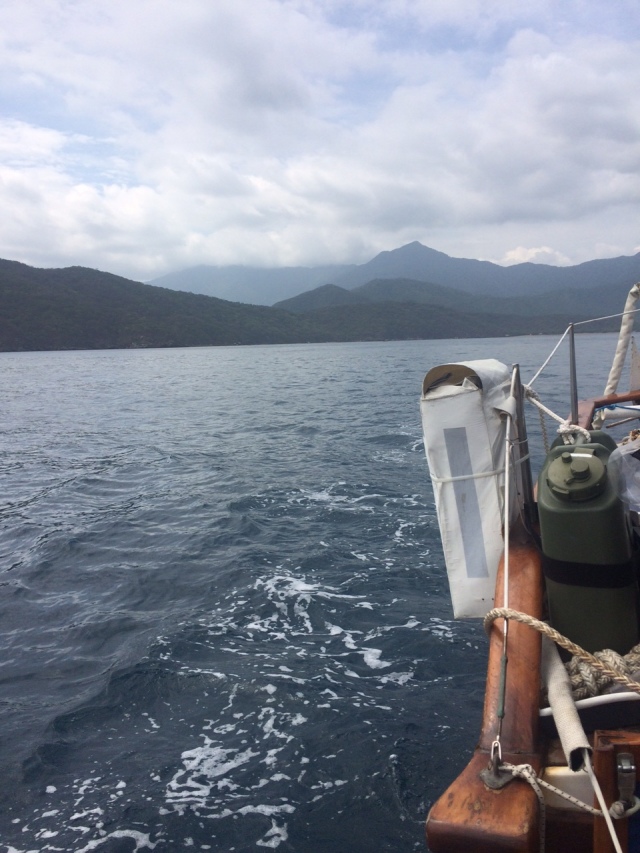
This passage really exemplified the diversity in Colombia’s geography. When we left the desert sands of Cabo de Vela we expected a temperate environment in Santa Marta, however the change of landscape over just 120 miles still amazed us. After a thirty hour passage, we anchored in Bahia Gairaca for the night before heading towards the city. Our short stay here in the Tayrona National Park ended up being a great treat, especially after seeing so many tourist agencies advertising their adventures there.
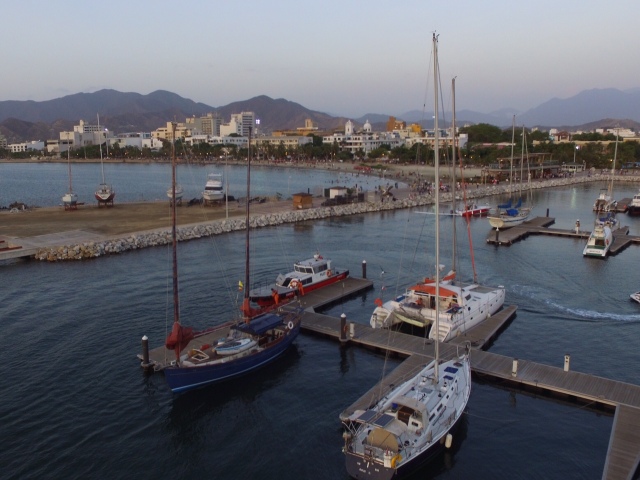
Santa Marta was a great little city with an excellent marina in the heart of it all. After a few nights underway and on the hook, Maggy and I both looked forward to the luxuries that accompany being tied up to a dock. Aside from the amenities, we enjoyed the mixture of commercial and private activity in the harbor; the port’s pilots used our pier to embark on their launches, as did locals on their weekend fishing trips.
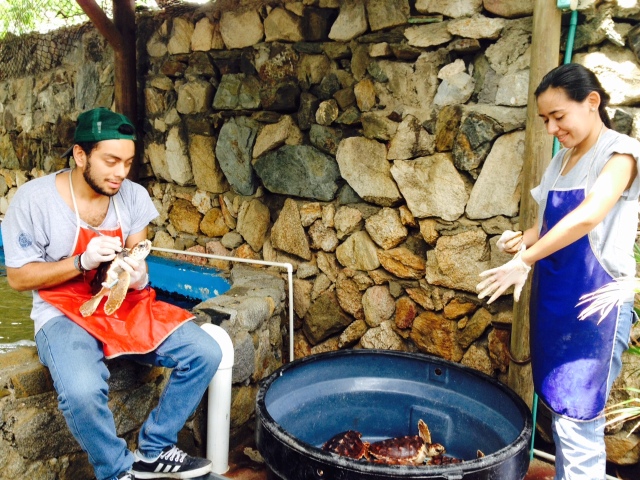
In Maggy fashion, we naturally needed to visit the Rodadero Sea Aquarium and Maritime Museum. We were unexpectedly escorted through the aquarium by a student volunteer, eagerly talking about each of the species of fish. After an awkward 5 minutes of the tour, we finally confessed that we couldn’t understand him. He was devastated. We did pick up a couple facts; all the fish on display lived in the coral and that Colombia’s national fish, the Royal Gramma, earned its title for its colors, “yellow and blue on the outside, and if you cut it open, red on the inside.”
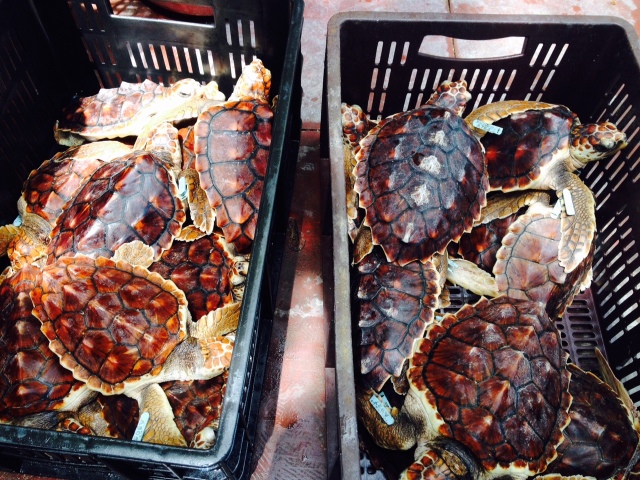
Part of the aquarium was dedicated to sea turtle rehabilitation. The turtles were raised until they had a better chance at surviving in the wild, then released. Last year, the facility released around 300 turtles back into their natural habitat. The crates of turtles were waiting for their daily cleaning, as the two volunteers tended to all of their little scratches, one by one
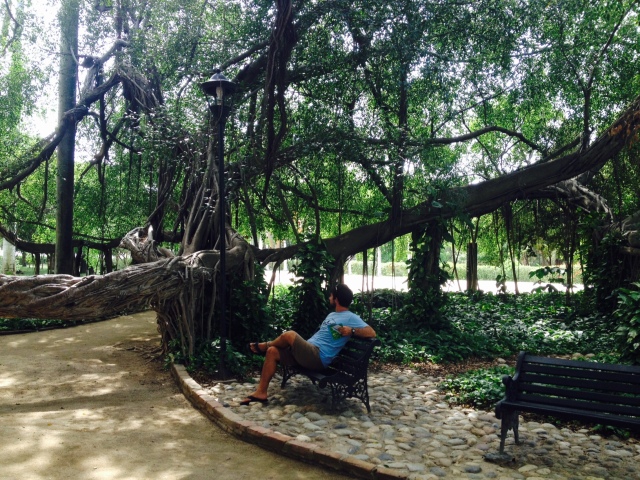
Ian’s choice destination while in Santa Marta was Quinta de San Pedro Alejandrino. This extensive “hacienda”or farm was built in the 17th century, and at the time, primarily produced honey and rum.
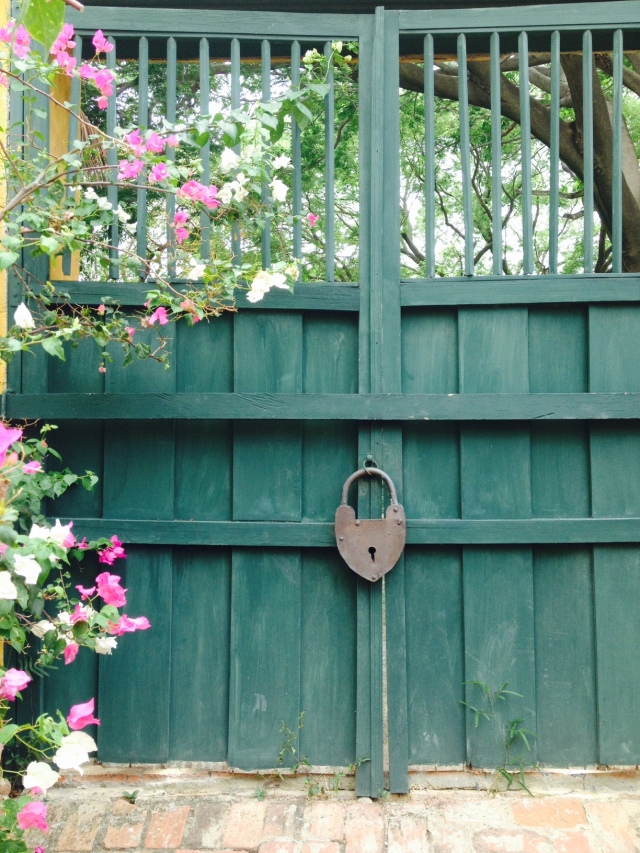
La Quinta de San Pedro is famous as the death place of the beloved revolutionist, Simon Bolivar. Nowadays, the hacienda has been converted to a museum, detailing the final 11 days of Simon Bolivar and explaining the many buildings used for processing the rum. It also remains as grounds for a botanical garden.

Be careful and stay alert down there! Love your pix and information!
Sent from my iPad
>